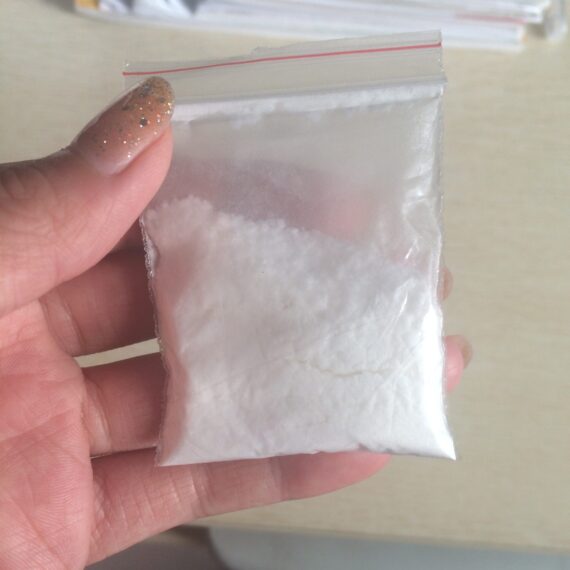
25I-NBOMe 25B-NBOMe 25C-NBOMe Analysis
Abstract
25I-NBOMe, 25B-NBOMe, 25C-NBOMe . In recent years, N-methoxybenzyl-methoxyphenylethylamine (NBOMe) derivatives, a class of designer hallucinogenic drugs, have become popular drugs of abuse. These drugs have been the cause of severe intoxications and even deaths. They act as 5-HT2A receptors agonists and have been reported to produce serotonin-like syndrome with bizarre behavior, severe agitation and seizures persisting for as long as 3 days. The most commonly reported derivatives are 25I-NBOMe, 25B-NBOMe and 25C-NBOMe, respectively 2-(4-iodo-2,5-dimethoxyphenyl)-N-[(2-methoxyphenyl) methyl]ethanamine, N-(2-methoxybenzyl)-2,5-dimethoxy-4-bromophenethylamine and N-(2-methoxybenzyl)-2,5-dimethoxy-4-chlorophenethylamine. Like many low dose hallucinogenic drugs these compounds are often sold on blotter paper. Three different types of commercially available blotter papers reported to contain NBOMe derivatives were obtained. These blotter papers were screened using Direct Analysis in Real Time AccuTOFTM mass spectrometry followed by confirmation and quantification by high-performance liquid chromatography triple quadrapole mass spectrometry. The major drug present on each of the three blotter products was different, 25I-NBOMe, 25C-NBOMe or 25B-NBOMe. The blotter papers were also found to have minute amounts of two or three NBOMe derivative impurities of 25H-NBOMe, 25I-NBOMe, 25C-NBOMe, 25B-NBOMe and/or 25D-NBOMe.

Introduction
Recently, a new class of “2C” serotonin 5-HT2A receptor agonists designer drugs, dimethoxyphenyl-N-[(2-methoxyphenyl) methyl]ethanamine (NBOMe) derivatives have become easily obtainable over the Internet which has resulted in their abuse in the USA, Europe and Asia (1). Stimulation of 5-HT2A receptors is responsible for the hallucinogenic effects of recreational drugs such as lysergic acid diethylamide (LSD) and 1-(2,5-dimethoxy-4-iodophenyl)-2-aminopropane (2). The terminology “2C” is an acronym coined by Alexander Shulgin for the two carbon atoms between the benzene ring and the amino group on the perceptional distorting and/or hallucinogenic phenylethylamine derivatives he synthesized (3, 4). Several of these derivatives, including 2-(4-iodo-2,5-dimethoxyphenyl)-N-[(2-methoxyphenyl) methyl]ethanamine (25I-NBOMe) and N-(2-methoxybenzyl)-2,5-dimethoxy-4-bromophenethylamine (25B-NBOMe) were first synthesized by Ralf Heim at the Free University of Berlin as part of a series of pharmacological tools to study the 5-HT2A receptor (5–7). Blotter papers containing 25I-NBOMe appeared on the designer drug market beginning in 2011 (8) and since then numerous NBOMe derivatives have been identified in blotter papers seized from the illicit drug market including: 2-(2,5-dimethoxy-4-methylphenyl)-N-(2-methoxybenzyl)ethanamine (25D-NBOMe), 2-(4-ethyl-2,5-dimethoxyphenyl)-N-(2-methoxybenzyl)ethanamine (25E-NBOMe), 2-(2,5-dimethoxy-3,4 dimethylphenyl)-N-(2-methoxybenzyl)ethanamine (25G-NBOMe), N-(2-methoxybenzyl)-2,5-dimethoxy-4-chlorophenethylamine (25C-NBOMe) and 2-(4-iodo-2,5-dimethoxyphenyl)-N-[(2,3-methylenedioxyphenyl) methyl]ethanamine (25I-NBMD) (9–11).
Several published abstracts and clinical case reports have described signs and symptoms of 25I-NBOMe (1, 8, 12–16), 25B-NBOMe (17–20) and 25C-NBOMe (18–21) intoxication. These reports reveal NBOMe intoxicated patients are typically young males, 14–29 years old with clinical presentations of a serotonin-like syndrome with bizarre behavior and severe agitation and seizures persisting for as long as 3 days. 25I-NBOMe intoxication has been ruled the cause of death in two cases in which the drug was detected in blood and urine (22). Quantified distribution of 25I-NBOMe in body fluids and tissues from a case of traumatic death has also been reported (23). Deemed a hazard to public health and safety, the Drug Enforcement Administration placed 25I-NBOMe, 25B-NBOMe and 25C-NBOMe into Schedule 1 of the Controlled Substances Act on 10 October 2013 (24).
Currently, the most widely abused of the many NBOMe derivatives appears to be 25I-NBOMe (25–28) which is sold as a powder or on blotter paper under the names 25I-NBOMe, “N-Bomb” and “Smiles”. Anecdotal reports indicate the powder in doses of 50–250 µg may be administered sublingually, by insufflation or applied to the buccal cavity. 25I-NBOMe blotter papers usually contain higher doses of 500–800 µg, apparently due to low bioavailability of the drug. Psychoactive drugs of abuse with very high potency having effective doses in the microgram (µg) range are often dissolved in a volatile solution and dropped or soaked on to blotter paper. The paper is often perforated into tiny squares or “tabs” which can be torn or cut apart and placed under the tongue or swallowed. Historically, LSD has been distributed on blotter paper with colorful and/or unique artwork which may serve as a trademark in the illicit drug trade. NBOMe blotter paper is similarly marked with identifying artwork and is often distributed and/or sold on the street as “blotter acid”, in reference to LSD.
We present the analysis of three different types of commercial available blotter papers reported to contain NBOMe derivatives. The blotter papers were ordered over the Internet and received before 25I-NBOMe, 25C-NBOMe or 25B-NBOMe were categorized as Schedule I according to the Federal Controlled Substances Act in November 2013. The blotters were advertised as containing 500 µg of either 25I-NBOMe, 25C-NBOMe or 25B-NBOMe. The approximate price per “hit” of blotter paper was $5 USD.
These blotter papers arrived via the mail with a customs declaration form attached to the front of the package claiming to contain a “music CD”. Upon opening the package, a Christmas music CD case was found that contained three different small bags containing blotter paper (Figure 1). The first type of blotter paper pictured part of a psychedelic sun and was labeled “25C-NBOMe”; the second type of blotter paper pictured part of a pyramid with an eye and was labeled “25I-NBOMe”; and the third type of blotter paper pictured Felix the Cat and was labeled “25B-NBOMe”. These blotter papers were screened using Direct Analysis in Real Time AccuTOFTM mass spectrometry (DART-MS) followed by confirmation and quantification by high-performance liquid chromatography triple quadrapole mass spectrometry (HPLC–MS-MS). The DART-MS method for the rapid detection of NBOMe derivatives was performed on both the blotter paper and the blotter papers dissolved in methanol. Ten other NBOMe derivatives including: (E)-2-(4-iodo-2,5-dimethoxyphenyl)-N-(2-methoxybenzylidene)ethanamine (25I-NBOMe imine), 25I-NBOMD, N-(2-fluorobenzyl)-2-(4-iodo-2,5-dimethoxyphenyl)ethanamine (25I-NBF), 25G-NBOMe, 25D-NBOMe, 2-(2,5-dimethoxyphenyl)-N-(2-methoxybenzylidene) ethanamine (25H-NBOMe), (E)-2-(2,5-dimethoxyphenyl)-N-(2-methoxybenzylidene)ethanamine (25H-NBOMe imine), 25B-NBOMe, 25C-NBOMe and 2-(2,5-dimethoxy-4-(methylthio)phenyl)-N-(2-methoxybenzyl)ethanamine (2CT-NBOMe) were also evaluated in methanol. Confirmation and quantification were performed on the methanol dissolved blotter papers using HPLC–MS-MS.
Methods
Reagents
The primary reference materials for 25I-NBOMe, 25I-NBOMe imine, 25I-NBMD, 25I-NBF, 25G-NBOMe, 25D-NBOMe, 25H-NBOMe, 25H-NBOMe imine, 25B-NBOMe, 25C-NBOMe and 2CT-NBOMe were purchased from Cayman Chemical Company (Ann Arbor, MI, USA) as hydrochloride salts. Polyethylene glycol (PEG) was purchased from ULTRA Inc. (North Kingstown, RI, USA). Melting point tubes were obtained from Corning Incorporated (Corning, NY, USA). Certified ACS ammonium acetate, formic acid, HPLC grade methanol and deionized (DI) water were purchased from Fisher Scientific (Hanover Park, IL, USA). Medical grade nitrogen and helium were purchased from National Welders Supply Company (Richmond, VA, USA). Blotter papers containing NBOMe derivative were obtained through the Internet at future-labs.eu.
Sample and reagent preparation
NBOMe derivative standards were individually prepared at 10, 25, 50 and 100 µg/mL. A 10 µg/mL NBOMe derivative mix standard containing: 25I-NBOMe, 25I-NBOMe imine, 25I-NBMD, 25I-NBF, 25G-NBOMe, 25D-NBOMe, 25H-NBOMe, 25H-NBOMe imine, 25B-NBOMe and 25C-NBOMe was also prepared. A set of the three different blotter paper products were each added to 10 mL of methanol which was then gently mixed to extract the NBOMe derivatives. All stock standards were stored at −20°C until testing.
DART-MS analysis For 25I-NBOMe 25B-NBOMe 25C-NBOMe
The screening was performed using a DART-MS operated in positive-ion mode and controlled by Mass Center software version 1.3.4m (JEOL Inc. Tokyo, Japan). The Direct Analysis in Real Time ion source had the helium gas flow rate at 2.0 L/min, gas heater temperature of 300°C, discharge electrode needle at 4,000 V, Electrode 1 was set at 150 V and Electrode 2 at 250 V. The resolving power of the mass spectrometer was 6,000 full width at half maximum. Measurements were taken with the ion guide peak voltage of 800 V, reflectron voltage of 900 V, Orifice 1 was operated at 300°C in 20, 60 or 90 V using switching mode that created a single file for all three voltages, Orifice 2 was set at 5 V and the ring lens was set at 3 V. The measured mass range was from 40 to 1,100 Da.
25I-NBOMe 25B-NBOMe 25C-NBOMe .Sampling for the DART-MS was performed as previously described by Steiner et al. (29). In brief, a mass spectrum of PEG with average molecular weight 600 was obtained with each data acquisition set as a reference standard to enable exact mass measurements. The PEG and methanol standards containing the NBOMe derivatives were measured by dipping the closed end of a cleaned glass melting point tube into the standard. The blotter papers were analyzed by DART-MS using two different sampling methods. The first analysis Of 25I-NBOMe 25B-NBOMe 25C-NBOMedid not involve any sample preparation. The blotter paper was held with a pair of forceps and placed directly into the DART-MS gas stream. The second analysis was performed by adding each blotter paper to 10 mL of methanol and gently mixing for 1 h. The methanol solutions were then sampled by dipping the closed end of a clean glass melting point tube into the methanol containing the blotter paper. The standards and samples were then moved back in forth, or wanded, in to the DART gas stream. Each of the samples or standards was wanded two times. The signal with the greatest abundance was used for the data analysis. Data were created using an averaged, background subtracted, centroided spectrum that was calibrated to the PEG + H mass reference table. The measured [M+H]+ spectra were compared with theoretical masses of each drug or fragment produced by in-source collision-induced dissociation. 25I-NBOMe 25B-NBOMe 25C-NBOMe
The evaluation of the 25I-NBOMe 25B-NBOMe 25C-NBOMe derivatives in methanol was conducted over five separate days. The NBOMe derivative standards were analyzed for limit of detection (LOD), precision and selectivity. The LOD of the DART-MS was evaluated using the 10, 25, 50 and 100 µg/mL of each NBOMe derivative standard. They were analyzed ten times using different aliquots. The intra- and interday precision for the mass accuracy was calculated from the analysis of five aliquots of each 25I-NBOMe 25B-NBOMe 25C-NBOMe derivative standard on three separate days for a total of 15 replicates. The selectivity of the DART-MS was determined for the NBOMe derivatives using the 10 µg/mL of 25I-NBOMe 25B-NBOMe 25C-NBOMe derivative mix standard. The acceptance criteria for each NBOMe derivative to be considered above LOD were met if the measured mass was within the instrument manufacturer’s specification of ± 5.0 mmu of the theoretical mass. Selectivity was determined if the individual NBOMe derivatives could be distinguished in with the mixture.
HPLC–MS-MS analysis 25I-NBOMe 25B-NBOMe 25C-NBOMe
The confirmation and quantification of the NBOMe derivatives on the blotter papers was performed using a modified previously published HPLC-MS-MS method (30). In brief, the instrument was an Applied Biosystems 3200 Q trap with a turbo V source for TurbolonSpray attached to a Shimadzu SCL HPLC system controlled by Analyst 1.4.2 software. Chromatographic separation was performed on a Restek Allure Biphenyl 5 µm 100 × 3.2 mm column (Bellefonte, PA, USA). The mobile phase consisted of A: DI Water with 10 mM ammonium acetate and 0.1% formic acid and B: methanol. The following gradient was used: 0.00–1.0 min starting at 50% B with a linear gradient to 80% B, then using linear gradient ending at 10.0 min to 70% B and finally returning at 10.1 min to 50% B. The source temperature was set at 650°C and had a curtain gas flow rate of 30 mL/min. The ionspray voltage was 5,000 V, with the ion source gases 1 and 2 at flow rates of 30 mL/min. The acquisition mode used was multiple reaction monitoring. The retention times (min), declustering potential (V), transition ions (m/z) and corresponding collection energies (eV) for all the compounds can be found in Table I. The total run time for the analytical method was 13 min. 25I-NBOMe 25B-NBOMe 25C-NBOMe



